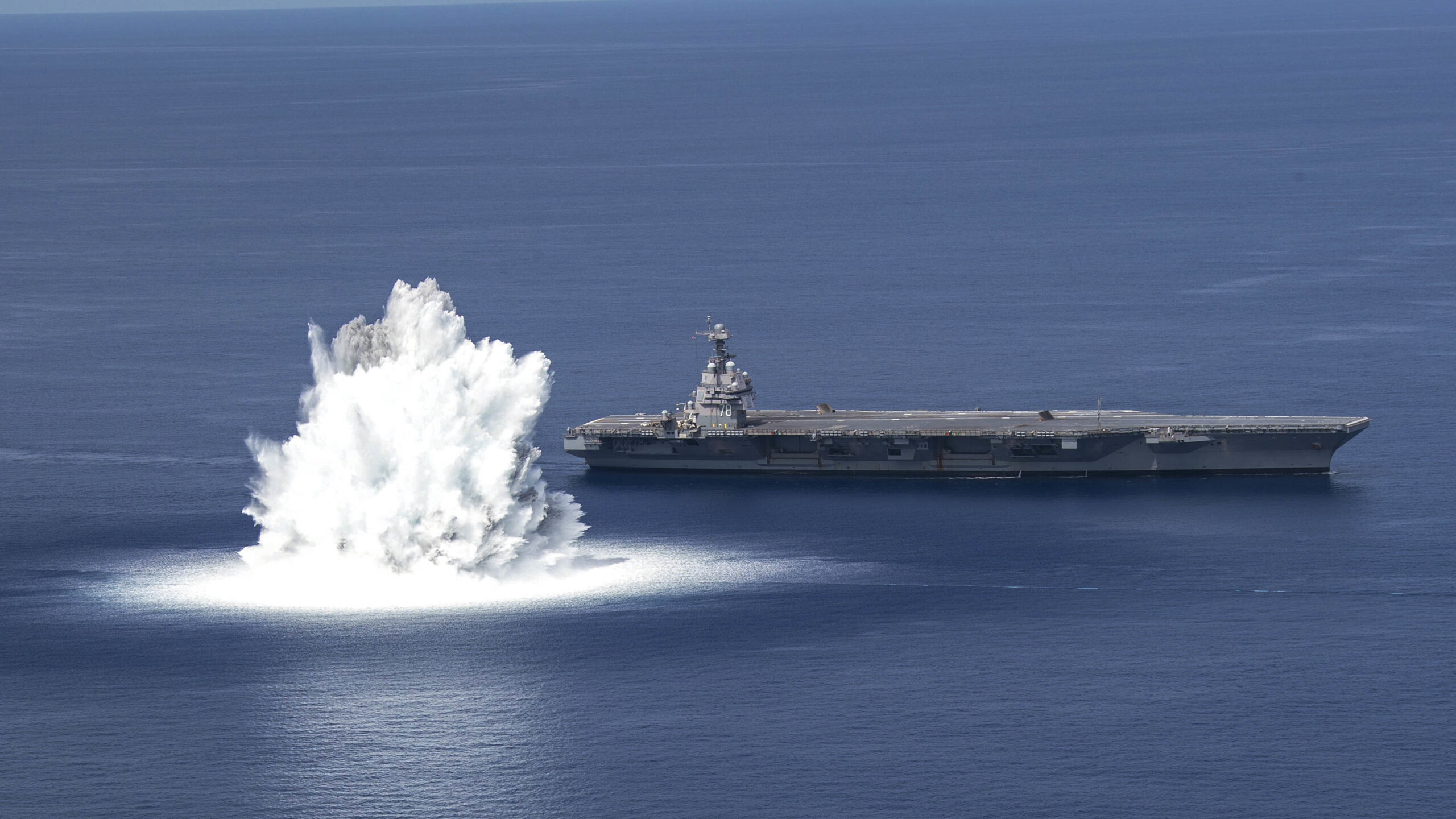
HII made its name building the Navy’s aircraft carriers, such as the Gerald R. Ford (CVN 78), which completed full ship shock trials last year. (Photo courtesy of the US Navy.)
WASHINGTON: Following multiple acquisitions as well as several years of in-house research and development, HII has unveiled an autonomy software suite that it says can be put on any ship or vehicle and is consistent with the requirements the US Navy has been developing for autonomous platforms.
The Navy wants “this open framework, they want to be able to take best […] breed of several different autonomy engines and put them together,” said Duane Fotheringham, an executive at HII leading the company’s unmanned systems business unit. “This very much allows us to do that. We can take each of these pieces and deliver them separately as part of this framework.”
The company, which days ago changed its name from Huntington Ingalls Industries, announced a rebranding last week during the Sea Air Space exposition to reflect its shift in recent years from being solely a shipbuilder to more broadly a defense technology firm.
Its new autonomy suite, dubbed Odyssey, is directly targeting the vision the Navy has laid out in recent years for how the service wants industry to bring autonomous capabilities to its unmanned — and in some cases, manned — platforms. In essence, the company says Odyssey can be installed on land, maritime or aerial platforms and prepares them to accept a variety of plug-and-play modules that HII has developed, such as health monitoring and perception, or capabilities developed by a third party.
That “plug-and-play” mentality is nearly identical to an effort led by the Navy’s program office for unmanned maritime systems and dubbed the Unmanned Maritime Autonomy Architecture. Think of it as the Navy’s rule book for how industry must develop autonomous systems.
The driving principle behind UMAA is defeating “vendor lock,” the notion that if a contractor’s technology is incapable of interacting with third-party software, then it forces the Navy to either commit to that one vendor for the long haul or go elsewhere.
To explain “vendor lock” another way, most open-source software available today is built to be run on a Microsoft Windows operating system. If you purchase a computer from Apple, which has its own operating system, and are unable to run a piece of software because it is not designed to interface with iOS, then you experienced vendor lock.
Microsoft and Apple have become prolific enough such that it is common for developers to write software capable of being used on either Windows or iOS, but in the niche world of highly customized, military-oriented unmanned systems, the standards are not as prolific or clearly defined. The Navy’s UMAA is its attempt to define the standards for anyone who wants to do business with them.
The impetus for developing Odyssey, Fotheringham said, was a desire to bring together HII’s internal research together with the capabilities the company acquired when it purchased the technology firms Hydroid and Spatial Integrated Systems.
“We’ve taken all of those pieces and we’ve started to put them together,” he said.






















